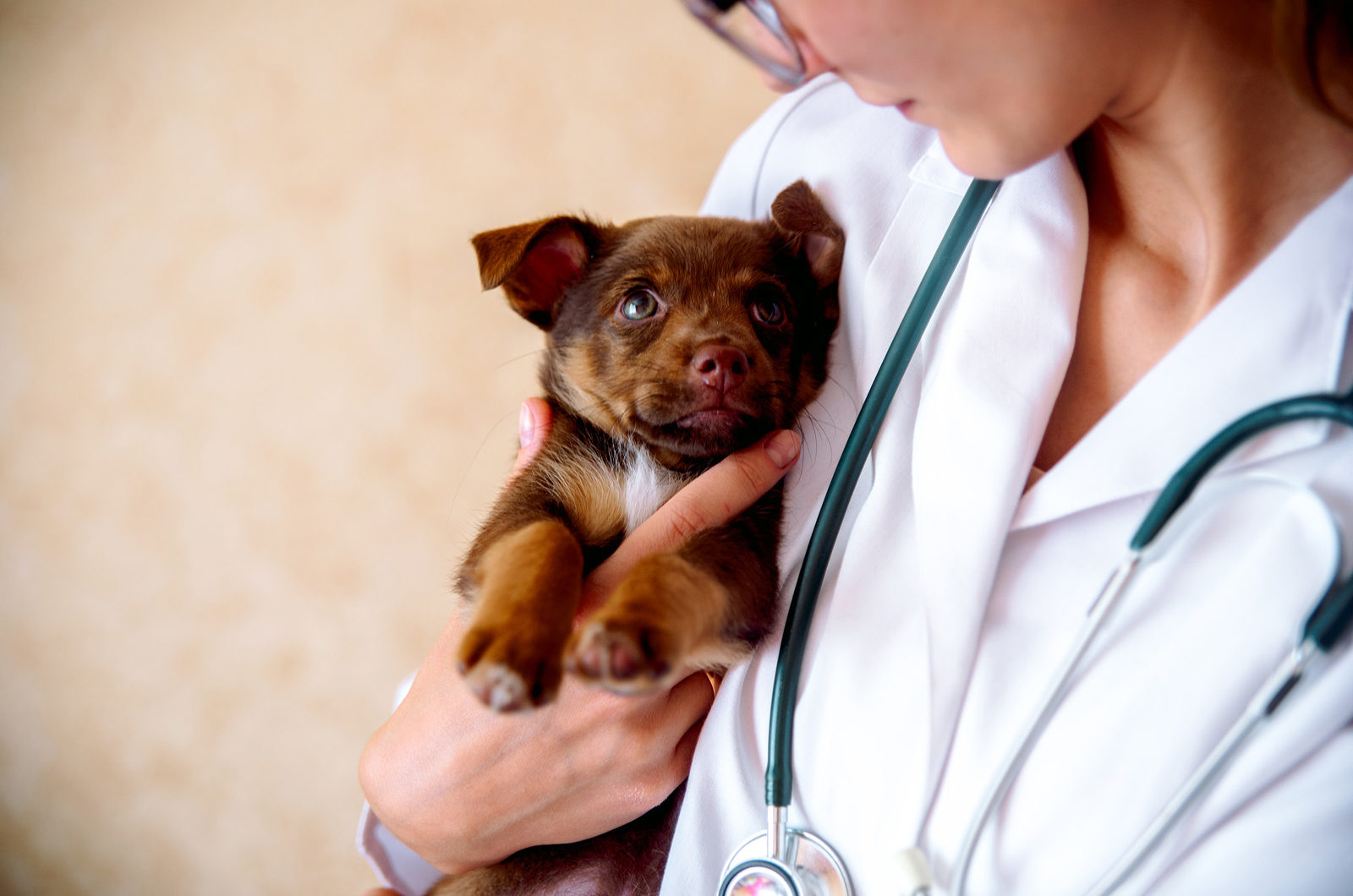Cephalexin for dogs | Human cephalexin for dogs | Dosage | Side effects | Is cephalexin safe for dogs?
For many of us pet parents, dogs are not only pets, they are members of the family. And just like members of our human family, our pups can get sick and may be prescribed antibiotics. If your dog was recently prescribed cephalexin, you may wonder what to expect. How does it work? Is it safe? What are the side effects? This article will better explain the medication cephalexin and how it can help your furry friend get back to his happy self.
What is cephalexin used for in dogs?
Cephalexin, also known by the brand names Keflex, Keftab, Rilexine, and Vetolexin, is a first-generation cephalosporin antibiotic. Cephalosporins are broad-spectrum antibiotics that kill bacteria by creating holes in bacterial cell walls. They are especially effective at controlling infections from gram-positive bacteria like streptococcus or staphylococcus but also have shown coverage against various gram-negative bacteria. Because of its excellent activity against Staphylococcus pseudintermedius and other bacteria that live on dogs’ skin, cephalexin is used frequently in dogs to treat bacterial skin infections. Cephalexin is even FDA-approved in dogs for treating superficial pyoderma, a type of skin infection of the outer layers of the skin and hair follicles. Cephalexin can also be used in dogs to treat other infections, including deep ear infections (otitis interna or otitis media), some respiratory infections, and urinary tract infections.
What is pyoderma?
Pyoderma is an infection of the skin and hair follicles. Pyoderma can be classified as either deep or superficial, with deep being an infection that extends into the deeper layers of skin and superficial staying on the skin’s outer surface. Bacterial species common in pyoderma are the normal commensal bacteria that live on the skin. In dogs, the most common bacteria in superficial pyoderma is Staphylococcus pseudintermedius.
Does cephalexin relieve itching in dogs?
Skin allergies, also called allergic dermatitis, causes dogs to be very itchy, and all of that scratching and chewing to relieve the itch causes skin infections. Skin infections are also very itchy on their own, so by healing the bacterial skin infection, cephalexin can relieve an important source of itchiness by healing the bacterial skin infection. Because skin infections are common in dogs with skin allergies, it is common to see cephalexin prescribed along with allergy medications like Benadryl (diphenhydramine), Zyrtec (cetirizine HCl), Apoquel (oclacitinib), or prednisone. While cephalexin is not an allergy medication, it is commonly used along with allergy medications as a multimodal approach to relieving itchy skin in dogs suffering from allergic dermatitis.
RELATED: Stop the itch: How to treat allergies in cats and dogs | Can dogs take Zyrtec?
Is human cephalexin safe for dogs?
Rilexine is the only FDA-approved form of cephalexin and is exclusively for dogs. Rilexine comes as a flavored chewable tablet, but dogs can also take the same cephalexin we take! This allows savings from SingleCare to be used on cephalexin for our dogs. Cephalexin is a prescription medication, and dogs need their own prescription for cephalexin from their veterinarian. It is important to never share your own prescriptions with your pet.
RELATED: Is it safe to share medication with my pet
Cephalexin dosage for dogs
Cephalexin is typically prescribed at 10 mg per pound of the dog’s body weight, administered every 12 hours. For instance, a 10-pound dog would require a dosage of 100 mg of cephalexin twice a day. Following the veterinarian’s instructions is essential to achieve the best results.
Several factors come into play when determining the appropriate cephalexin dosage for dogs. These factors include the dog’s weight, overall health condition, the severity of the infection, location, and the type of bacteria present. A thorough examination by a veterinarian will allow the vet to prescribe the appropriate dose for a dog maximizing its efficacy while minimizing the risk of side effects.
Cephalexin is available in capsules of varying sizes ranging from 250 mg capsules to 750 mg capsules. There is also an oral suspension (liquid) available which may be best for smaller dogs, and a chewable flavored tablet. Cephalexin and other antibiotics in the cephalosporin class of antibiotics have been noted to have an odor that resembles cat urine, but this is normal. Cephalexin capsules and tablets can be hidden in a treat for smoother administration but do not need to be given with food. The liquid form should be kept refrigerated and shaken before giving by mouth to the dog through an oral syringe. The liquid formulation should be discarded or replaced 14 days after opening. Cephalexin can be given for varying lengths of time, ranging from weeks to months, so make sure to follow the directions carefully.
To ensure successful treatment and to limit the risks of harmful side effects, it is important to give cephalexin as prescribed. Treatment length can range from two weeks to four months. Avoid making any adjustments to the dosage without consulting your veterinarian first.
Cephalexin starts working within approximately 90 minutes of administration. However, it may take a day or two before you can see improvement in your dog’s symptoms. For best results, your veterinarian may advise continuing cephalexin treatment for a week or two after all symptoms of infection have subsided. It’s essential to adhere to the full duration of the prescribed treatment.
Cephalexin for dogs’ side effects
Overall, side effects are not common in dogs. The most common side effects of cephalexin are mild diarrhea and vomiting. Potential side effects of cephalexin include:
- Increased Salivation: Some dogs may experience increased drooling while taking cephalexin. This side effect is usually mild and temporary.
- Increased Breathing Rate: In rare cases, dogs may exhibit a slightly increased respiratory rate while on cephalexin.
- Excitability: A few dogs may display heightened excitability or restlessness, but this is generally uncommon.
- Gastrointestinal Upset: Mild gastrointestinal symptoms like vomiting or diarrhea may occur in some dogs during treatment with cephalexin.
- Allergic Reactions: Although rare, it is possible to have an allergic reaction to cephalexin, presenting symptoms such as skin rash, fever, or, in severe cases, anaphylactic shock. Immediate veterinary attention is needed if such reactions are observed.
Cephalexin is usually eliminated from a dog’s system within approximately 24 hours after administration. In the case of side effects, they typically subside within this period. If your dog experiences any concerning side effects, closely monitor their condition and consult your veterinarian if concerns persist or worsen.
The dosage of cephalexin for dogs varies based on the dog’s weight and medical condition. As mentioned earlier, the typical dosage is 10 mg per pound of body weight, administered every 12 hours. Safety studies have shown minimal side effects of vomiting and diarrhea with doses five times the recommended dose. Severe overdosing can lead to rare adverse effects such as kidney damage or blood disorders. Improperly dosing cephalexin does have concerns for antibiotic resistance developing, which could cause additional problems. For that reason, the dosage of cephalexin given to dogs should be determined and prescribed by a veterinarian to ensure successful treatment and reduced risk of harmful side effects.
Does Cephalexin Make Dogs Sleepy?
Cephalexin is not known to cause drowsiness or sedation in dogs. Cephalexin’s primary function is to treat bacterial infections, but it is commonly used with antihistamines like Benadryl, which can cause drowsiness in dogs.
Is cephalexin safe for dogs?
Cephalexin has been widely used in veterinary medicine to treat bacterial infections in dogs. Numerous studies have shown its effectiveness in treating infections, particularly skin infections in canines, with treatment success of over 93% in canine pyoderma.
Cephalexin has few drug interactions. If your dog is on one of the following medications, your vet may recommend a different dose of cephalexin or require additional monitoring while on the medication:
- Warfarin
- Probenecid
Additionally, it is important to inform the veterinarian about any supplements your dog may be taking or any additional medical conditions.
Dogs with the following conditions may not be able to take cephalexin:
- Sensitivity to beta-lactam antibiotics, including penicillin
- Severe kidney disease
- Pregnant or lactating
Reactions to cephalexin are rare, but it is important to monitor pets for worsening symptoms of itchiness, skin rashes, changes in behavior, or difficulty breathing and report this to a veterinarian as soon as possible.
Regular check-ups with the veterinarian are recommended to evaluate the progress of your dog’s condition and ensure that the infection is resolving properly. In some cases, additional tests, such as skin cultures, may be performed to confirm no resistant infections are present and that the treatment plan is working.
With careful use, cephalexin can be an important part of treating infections for dogs, allowing our furry friends to get back to feeling like themselves.
Sources
- Comparison of the efficacy of cefpodoxime proxetil and cephalexin in treating bacterial pyoderma in dogs, The International Journal of Applied Research in Veterinary Medicine
- Antimicrobial use guidelines for treatment of respiratory tract disease in dogs and cats: Antimicrobial guidelines working group of the international society for companion animal infectious diseases, Journal of Veterinary Internal Medicine
- Cephalexin Plumb’s Veterinary Medication Guides
- How I treat otitis media/interna Today’s Veterinary Practice
- Rilexine product insert Virbac Plumb, Donald C. (2018). Cephalexin. In Plumb’s veterinary drug handbook (pp. 229-232). Pharma Vet Inc.











